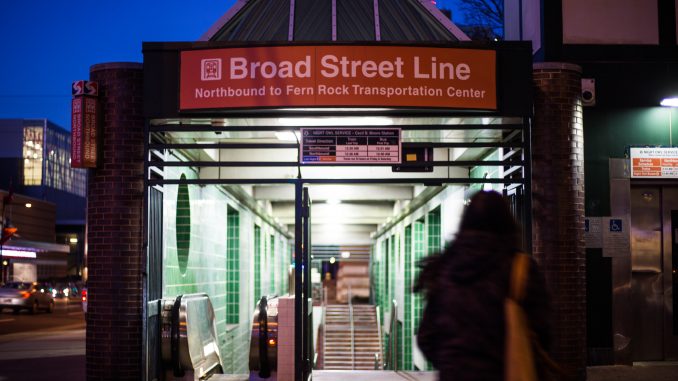
The Cecil B. Moore Philadelphia Freedom Fighters, a racial equality activist group based in Philadelphia for more than 50 years, is currently working with SEPTA to create a memorial for the late civil rights leader at SEPTA’s Cecil B. Moore subway station.
Creating a memorial for Moore at the station has been a matter of discussion for the Freedom Fighters and SEPTA since Temple decided to rebrand the station in August 2015 as part of its “Take Charge” advertising campaign. The rebranding, which covered the roof of the head house of the north entrance of the station and the outsides of the elevators at both the north and south entrances, was removed in October 2015.
Karen Asper-Jordan, one of the members of the Freedom Fighters, said creating a memorial for Moore at the station is important to North Philadelphia’s history.
“What we would like to see is a station that shows the history of the struggle in the community, and portrays the history of the civil rights movement,” Asper-Jordan said.
The memorial is intended to teach people about Moore and his importance in the city of Philadelphia.
“A lot of people don’t know who he is. If we make this a historical station, it will make Philadelphia and Temple proud,” Asper-Jordan said.
The group is expected to have a meeting to talk about the creation of the memorial in the upcoming weeks.
Cecily Banks, Moore’s daughter, said she believes it is necessary to create a memorial in memory of her father and hopes to attend the organization’s future meetings.
“It’s very important that younger people know the contributions that he’s made,” Banks said. “There are a lot of people who only know the name because of the street, but don’t have any idea of what’s behind that.”
A sample of students seemed to be in support of the idea for a memorial.
“It’ll create awareness of who Cecil B. Moore is since not a lot of people know who he is,” said Will Foy, a senior therapeutic recreation major.
He added that one of the proposed parts of the memorial, a statue, would grab people’s attention and get them to learn more about Moore.
“I have no background on who Cecil B. Moore is,” said Brian Baist, a senior kinesiology major. “I just knew of it because it’s a street name and a popular train stop. Evidently he’s an important person and I feel ignorant to who he is, so a statue could spread knowledge and enlighten people.”
Currently, there is no specific date for when the memorial will be created, Asper-Jordan said, but there has been progress.
“It started a few years ago,” she added. “When we initially had meetings with SEPTA, people wanted to demonstrate what they weren’t doing there. We still don’t have the statue, but there are things we are doing to get it.”
The meeting is expected to cover the creation of a plaque for Moore outside of the station, getting the station to be renamed solely as Cecil B. Moore station and eventually talking to SEPTA about adding televisions into the station that would not only give travelers information on the train schedule, but also on the significance of Moore himself.
Francis Kelly, SEPTA’s assistant general manager of government and public affairs, who has been working with the Freedom Fighters, could not be reached for comment.
Nenseh Koneh can be reached at nensehalexiskoneh@temple.edu.


Be the first to comment